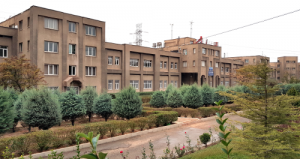Fields of Research
- Turbomachinery
- Aeroacoustics
- Advanced Measurement Techniques in Fluid Mechanics
- Microfluidics
Turbomachinery
The design of inlet passage and inlet guide vanes has a direct impact on the performance of a gas compressor. The following figure shows three novel inlet designs for a centrifugal compressor. The compressor map on the right shows the effectiveness of each design [Mohseni, 2012]
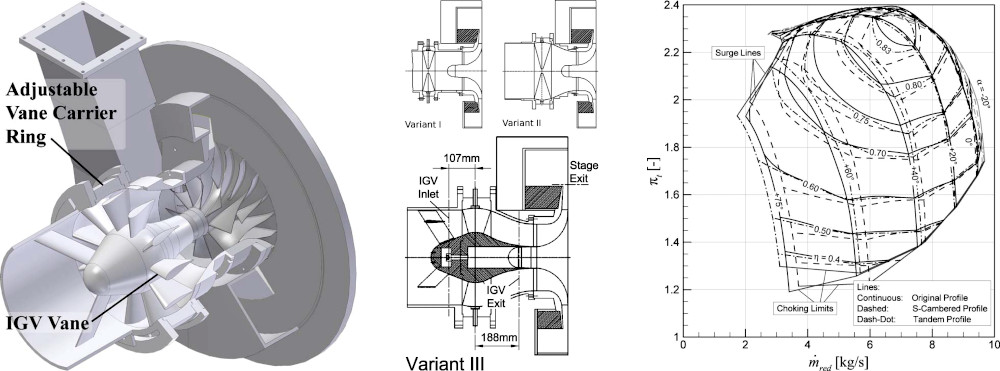
Particle Image Velocimetry (PIV) is an image based measurement technique capable of measuring velocity distribution in a fluid flow by taking successive images from the particles traveling with the fluid. While PIV is readily applicable to many external flows, its application to internal flows has several challenges such as accessing the fluid passage and light reflection from solid surfaces. In order to solve the access problem, one solution is the use of endoscopes. The following figure (top) shows fully endoscopic and stereoscopic PIV measurement of flow in the inlet passage of a centrifugal compressor. The bottom diagram shows the comparison of velocity measurement by PIV and 5-hole aerodynamic pressure probes, showing a very good match [Mohseni, 2011].
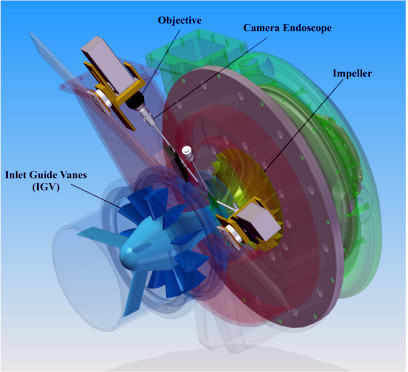
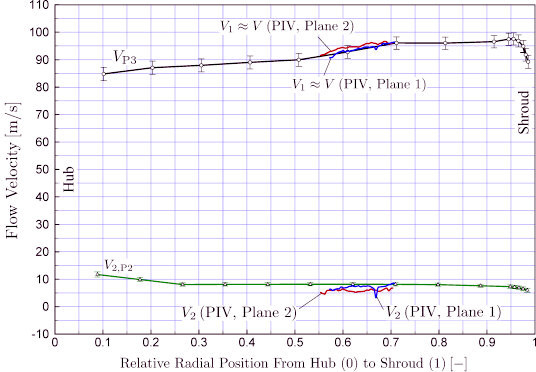
With the development and availability of computational power, sophisticated and complicated methods of analysis have found their ways to engineering design chains. Nowadays CFD based aerothermal optimization techniques are used in the design of advanced turbomachines. The following example shows a simple turbine blade before and after aerodynamic optimization [Yazdani, 2017].
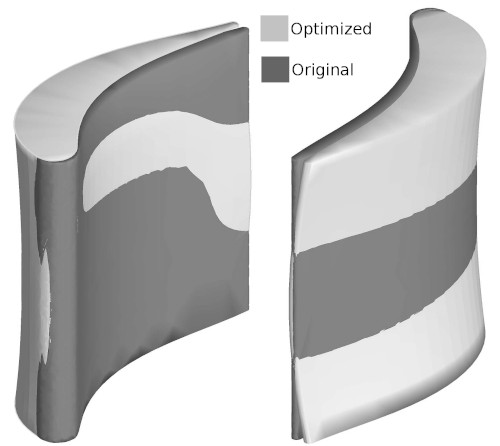
In the design of turbomachines, the identification and estimation of flow separation and transition to turbulent flow is of considerable importance. The following figure shows the dynamics of flow transition and separation on the suction side of turbine blade by large eddy simulation (LES) [Sajadmanesh, 2020].
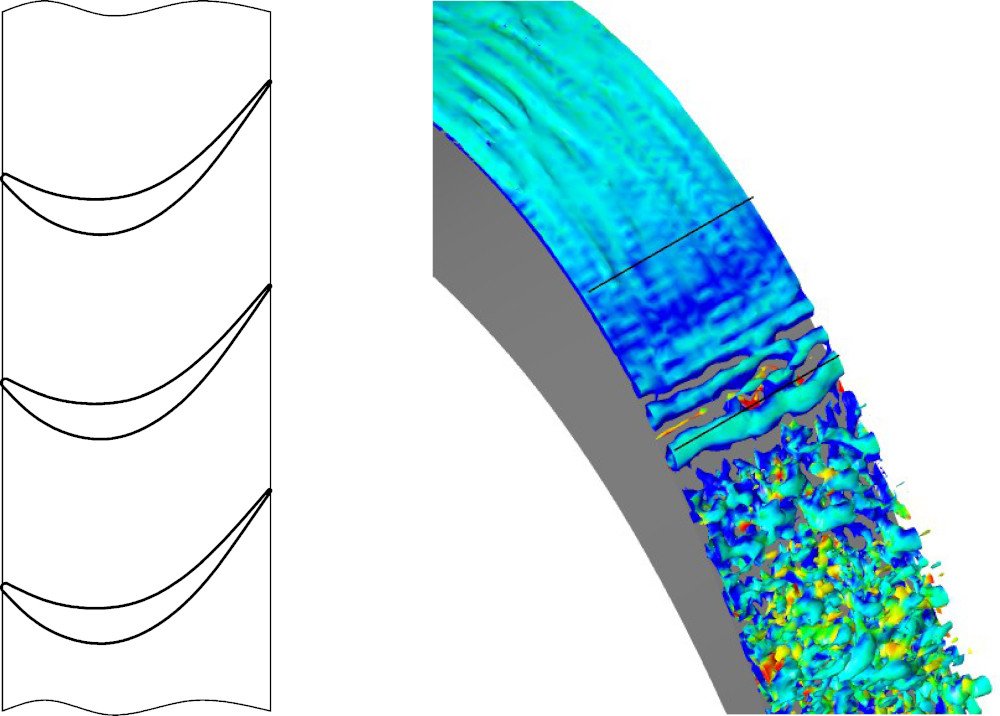
One of the key aspects of flow separation is the formation of separation bubble (a small region of flow near the surface, where flow separation occurs). The identification of separation bubbles, as an early sign of flow separation, helps the engineers to develop more reliable aerodynamic designs. However, due to its small size, a separation bubble is hardly identifiable and its presence is often investigated by high fidelity and rather computationally expensive methods such as LES. In the following figure, it is shown that a combination of URANS and POD can effectively identify separation bubbles. This result is of considerable importance for the turbomachine designers, since most of the existing simulations are based on URANS or RANS. The left figure shows the turbulent kinetic energy distribution by URANS and the right figure shows how POD can reveal the existence of separation bubble on the suction side of the blade [Sajadmanesh, 2019]
LES: Large Eddy Simulation
POD: Proper Orthogonal Decomposition
RANS: Reynolds Averaged Navier–Stokes
URANS: Unsteady Reynolds Averaged Navier–Stokes
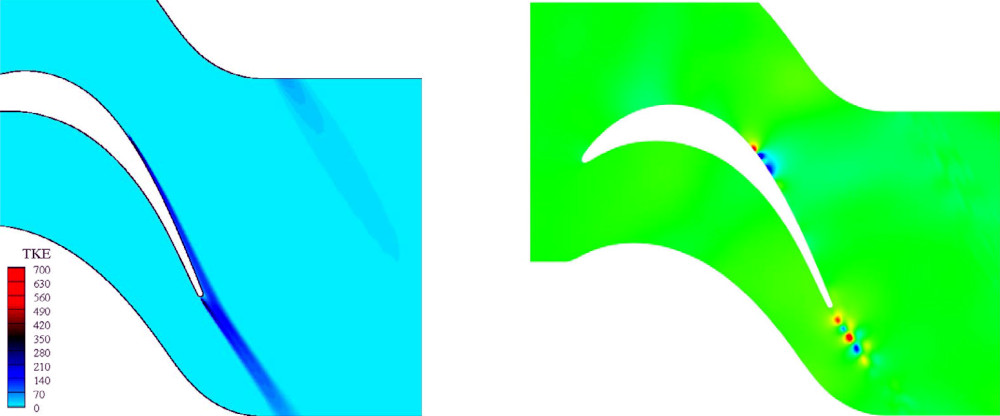
Aeroacoustics
Cavity flow is a benchmark problem for investigating flow generated sound in aeroacoustics. The following animation shows vortex generation during the passage of a uniform flow over a rectangular cavity [Maleki, 2018].
Time-reversal technique is an acoustic tomography method, in which the acoustic emission is recorded by an array of sensors (microphones). Using numerical computation, when the recorded signal of each sensor is played backward in time, the original acoustic source distribution is reconstructed. The following animations show the forward and reverse (reconstruction) propagations of an acoustic source distribution in the shape of a Shepp-Logan phantom. [Mohseni, 2021]
Forward:
Reverse (reconstruction):
Advanced Measurement Techniques in Fluid Mechanics
Image noise reduction is one of the data processing steps in image-based measurement techniques. Image processing by PDEs is an effective technique, which can be used for image denoising. The following figures illustrate noise reduction by a novel PDE-based technique, developed for speckle shift image pairs commonly used in PIV and BOS measurement techniques. Contours of speckle displacement are shown in the figures, which reveal the noise affected area in the right half. The left figure shows noise reduction by an algebraic method and the right image shows noise reduction by the PDE-based method, showing the effectiveness of the method. This method is developed to filter medium and high frequency noise [Mohseni, 2021].
BOS: Background-Oriented Schlieren
PDE: Partial Differential Equation
PIV: Particle Image Velocimetry



